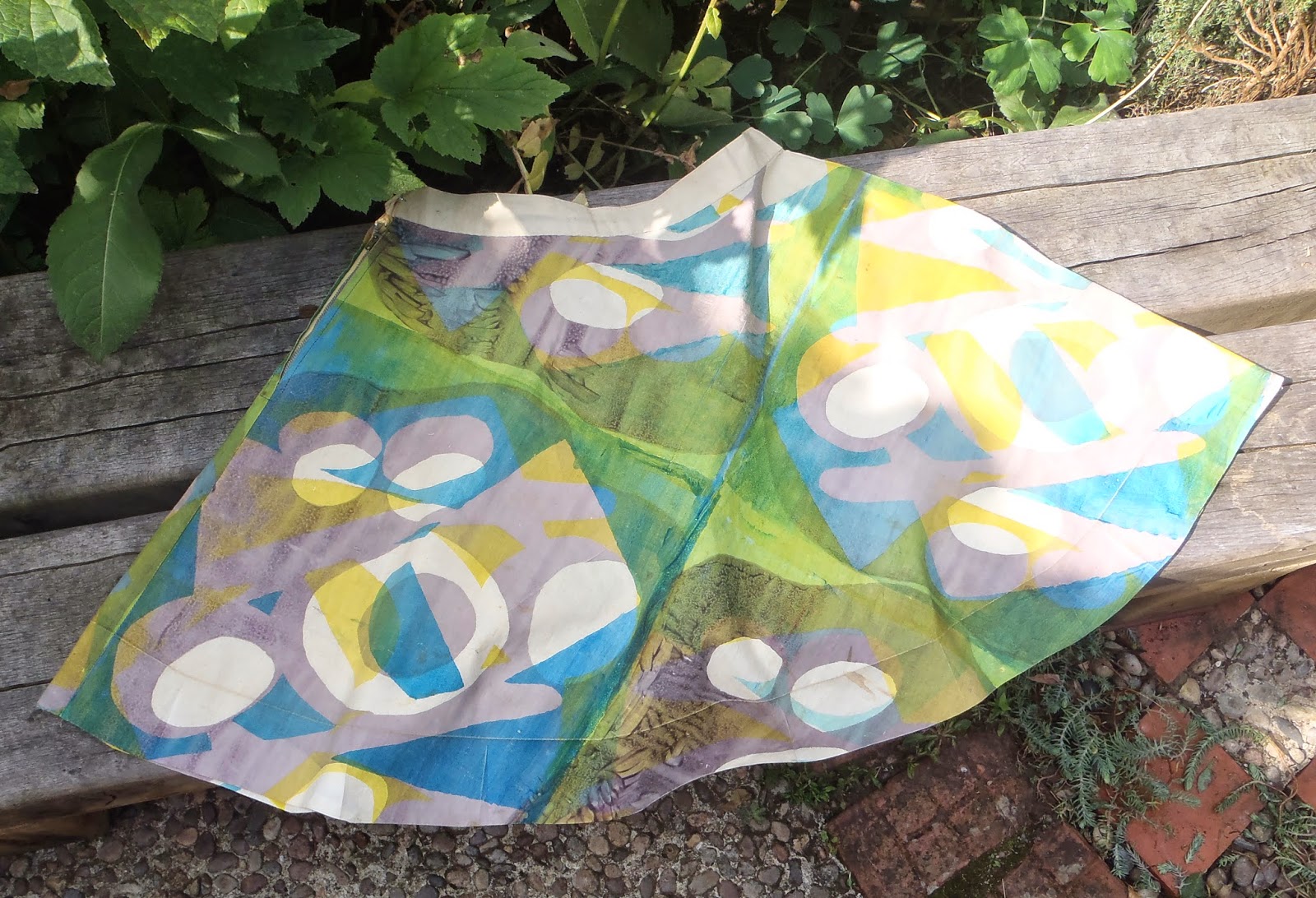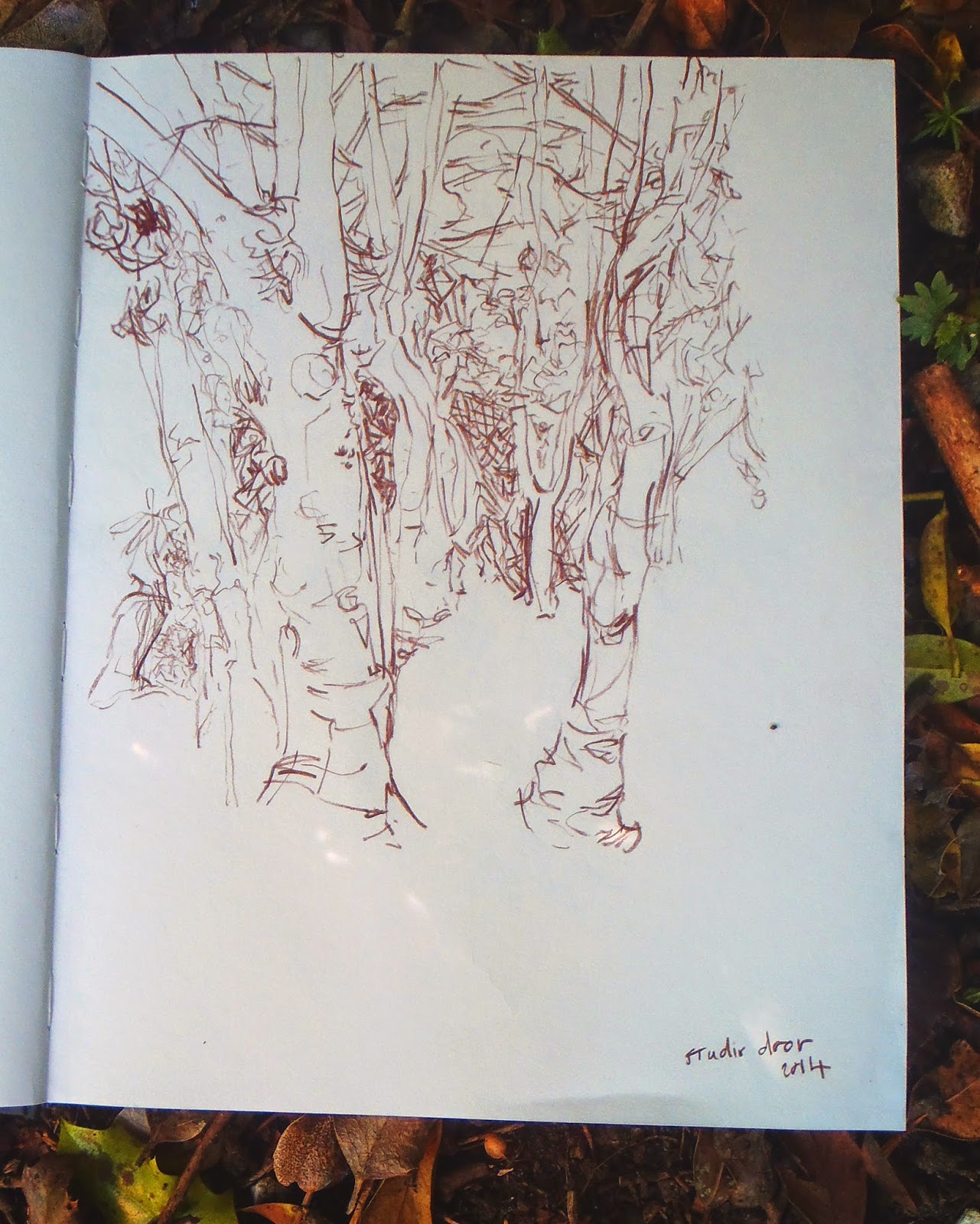 |
| Sound Drawing and closed sketchbook from Snowdonia Long Drawing |
A sample can be found here:
https://soundcloud.com/sound-out-loud/up-20high-20walk-20-20track#t=0:21
The two days were packed with discussions. A little lad listening with his dad explained ( after his dad enquired about my sound drawing) ' The sounds are like charcoal and the drawings and the logs are burnt on the fire to make the charcoal', it's wonderful the way children can grasp easily just what they see.
I love this photo taken by Helen Goodwin of the MA show set up, as Alison Carlier and me dance to a section of sound drawing with the rhythm of fast walking downhill.
As a lady walks into the room she notices the trees outside and my quick tree sketches, as we discuss the Sound Drawing she recalls the memory of being unwell one day on holiday and remaining in her room became fascinated by the ever changing qualities of tree outside the window. On her return home, the photograph she took as a reminder was extremely disappointing, it captured nothing of her fascination. Every individuals memory of a place contains much more than the click of a static camera.
















